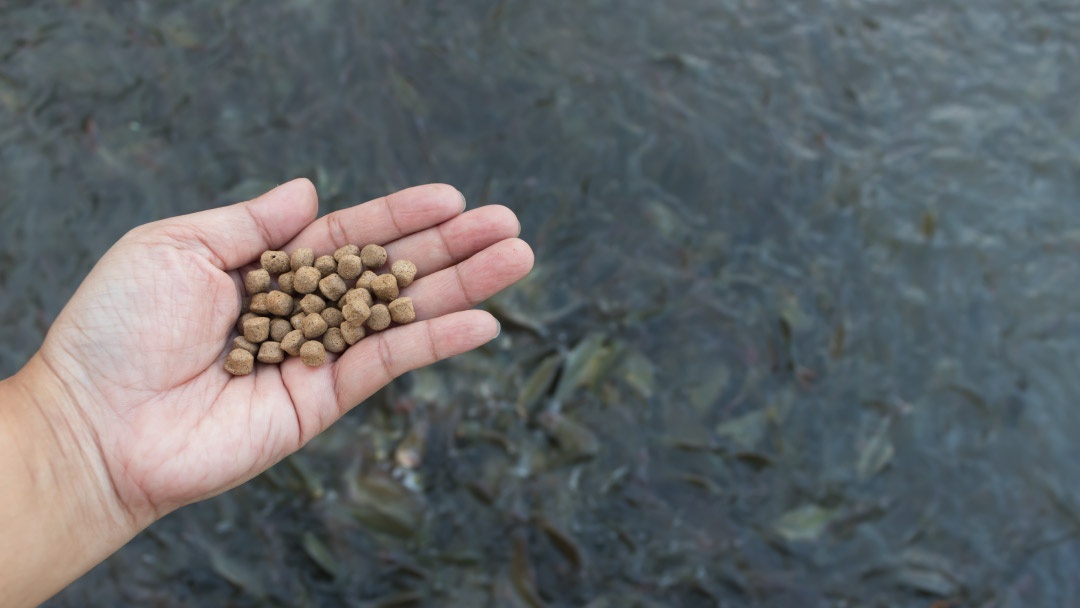
Bioactive peptides are emerging as some of the most promising functional ingredients in modern aquafeeds. These naturally derived short chains of amino acids have demonstrated the ability to improve growth, strengthen immune responses, and protect fish against disease—offering a sustainable alternative to antibiotics and synthetic additives.
Bioactive peptides can be sourced from a wide variety of sustainable protein materials, including algae, insect meal, yeast, soy, and fish by-products. Most are produced through enzymatic hydrolysis, a process that preserves their biological activity while allowing for efficient, large-scale production.
Among the most notable bioactive peptides is glutathione, a naturally occurring tripeptide widely used to reduce stress-induced damage in fish and crustaceans. In species such as tilapia, common carp, and shrimp, dietary supplementation with glutathione has been shown to improve survival rates, enhance the activity of antioxidant enzymes such as SOD and CAT, and increase resistance to environmental stressors like ammonia and microcystins.
With growing restrictions on antibiotic use, antimicrobial peptides have gained attention as a natural and effective alternative—especially as concerns about antimicrobial resistance continue to rise.
Antimicrobial peptides have been shown to significantly improve survival in fish exposed to pathogens such as Aeromonas hydrophila and Vibrio spp. They also boost non-specific immune responses and improve feed efficiency. In experimental settings, transgenic fish expressing antimicrobial peptides have demonstrated enhanced disease resistance, sparking interest in their potential future applications.
Though less extensively studied, antiviral peptides are gaining recognition for their potential to fight viral infections that cause major economic losses in aquaculture, such as white spot syndrome virus and infectious salmon anaemia virus.
Some antiviral peptides are now being incorporated into functional feeds using carriers such as silkworm pupae, with encouraging results in shrimp. These peptides work by either preventing virus entry into host cells or disrupting viral replication.
Inflammation—particularly in the gut—can severely impact fish performance. Anti-inflammatory peptides offer a natural way to regulate these responses without relying on pharmaceuticals.
In crucian carp, anti-inflammatory peptides have been shown to reduce intestinal inflammation markers to levels comparable with enrofloxacin, a commonly used antibiotic. This makes them valuable candidates for maintaining gut health and mitigating the effects of dietary or environmental stress.
Immunomodulatory peptides (IDPs) broadly support the immune system by enhancing both innate and adaptive immune responses. Some peptides in this group also function as antioxidants or antimicrobials, offering multifunctional benefits.
In various fish models, immunomodulatory peptides have been linked to increased immune gene expression and greater resistance to infection—making them a promising tool for preventive health management in aquaculture.
Finally, nutritional peptides have shown potential to improve the uptake of essential amino acids, particularly in species with inefficient protein metabolism or when using plant-based diets.
Short-chain peptides containing methionine, lysine, or glutamine have been demonstrated to enhance growth and feed utilisation, while reducing nutrient leaching—a key challenge in shrimp farming.
While current findings are promising, the researchers emphasise that further investigation is needed—particularly into BAPs that could influence lipid and glucose metabolism, reproduction, and appetite regulation.
They also advocate for stronger collaboration between aquaculture nutritionists and food scientists to accelerate the discovery and application of these functional compounds in future feed formulations.


